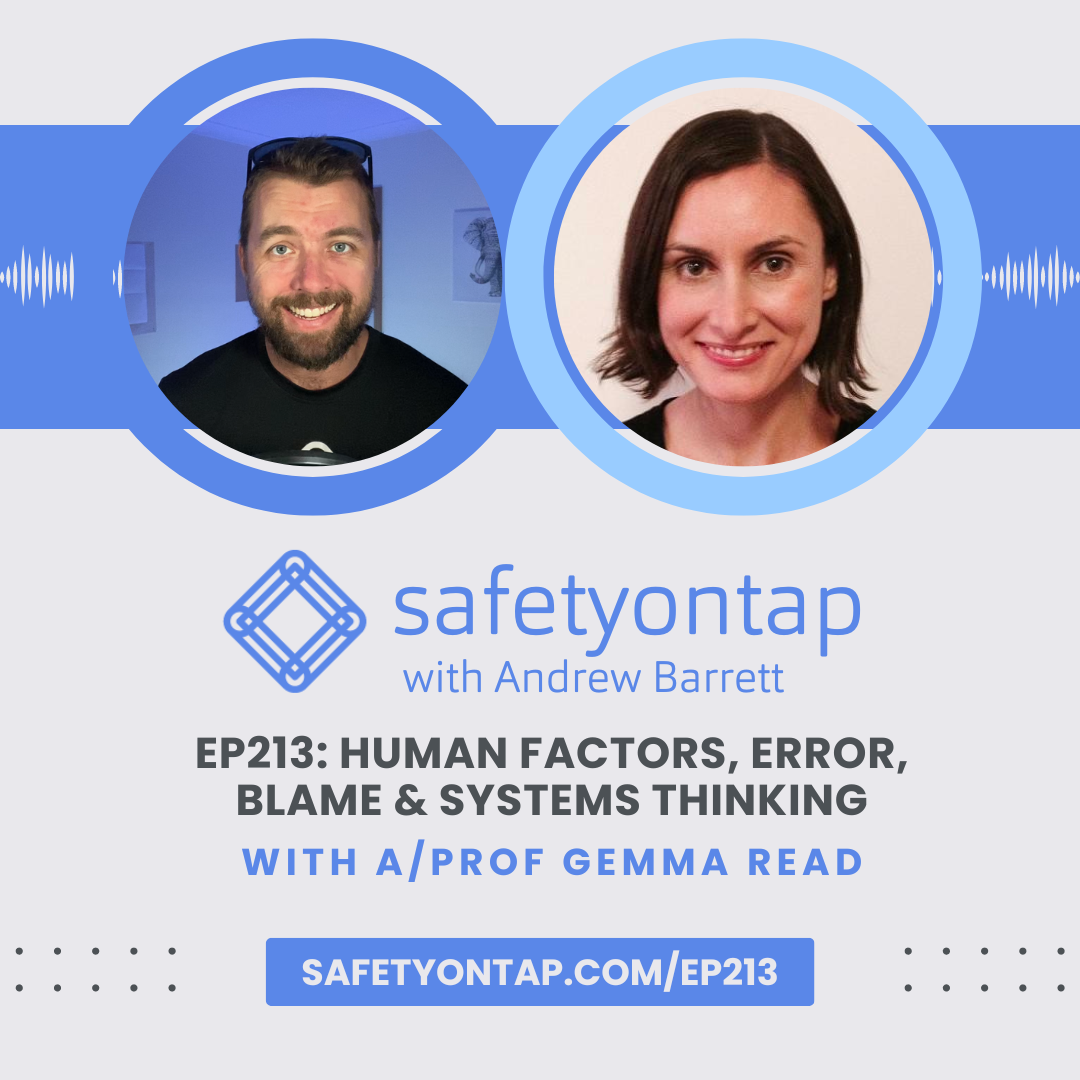We are now realising that just focussing on preventing bad stuff is a pretty limited view of health and safety, and that many of our approaches are limited in the application and the quality of their outputs. So how would we broaden out focus to study and improve normal work? It turns out there are theories, models, and people who’ve doing this for 80 years. Allow me to introduce Human Factors, Ergonomics, and Systems Thinking.
Hey, it’s Andrew, and this is Safety on Tap.
Since you’re listening in, you must be a leader wanting to grow yourself and drastically improve health and safety along the way. Welcome to you, you’re in the right place. If this is your first time listening in, thanks for joining us and well done for trying something different to improve! And of course welcome back to all of you wonderful regular listeners.
My guest today is Associate Professor Gemma Read, from the Centre for Human Factors and Sociotechnical Systems, at the University of the Sunshine Coast.
We talk about one of Gemma’s journal papers to bring this dialogue to life. The paper, called “State of science: evolving perspectives on human error”, is really quite readable (click here to download it).
Here’s Gemma:
Gemma and her team are doing heaps of other cool research, including papers explaining how they have used tools like ActorMap, AcciMap and PreventiMap. You can find links to that over here.
Since I was so impressed by the dot-point summary of the paper, here’s a screenshot of it:

Here’s my three takeaways from that chat with Gemma Read:
Takeaway #1: Using different approaches, like ActorMap, AcciMap and PreventiMap gives us heaps more information about the context and the system of work, which gives us a better chance of focussing on and making change in the parts of the system which we think will have the greatest impact. We need to go big and broad before we can narrow in on action.
Takeaway #2: Within the tools and approaches Gemma mentioned, she reinforced that we are looking at the parts of the system of work, including people, processes, and physical stuff, BUT the interactions between the parts become the interesting bit in the analysis, which she referred to as the ‘network’. Everything is interconnected, so instead of working on isolated parts of the problem, look at the interconnections and you will see now and interesting insights, and opportunities to improve.
Takeaway #3: Here’s a podcast recommendation for you. In Episode 161 of the Safety on Tap podcast, I introduce you to Maslow’s Hammer. If you’ve every heard the saying ‘if all you’ve got is a hammer, everything looks like a nail’, that’s Maslow’s hammer they are talking about. In health and safety we only have a few kinds of hammers….so its difficult to see things as other than nails. But human factors, ergonomics and systems thinking are alternatives to hammers, which helps us understand and improve work in ways we haven’t seen possible before. We can’t risk assess and investigate our way out of all health and safety problems. Check out safetyontap.com/ep161
While we are talking about podcast recommendations, here’s a few more for you to follow on with: Sara Pazell and I caught up in Ep 88 to discuss a big word – salutogenesis – that’s actually easily understood, and aligns nicely with today’s convo with Gemma. Ep173 is a collection of metaphors which will help you think about your work and the use of tools, that episode is called the Wizard or the Wand. And finally Ep210 with Craig Ashurst explored one of the foundational concepts underpinning what Gemma and I talked about today, which is complexity.
Thanks so much for listening. Until next time, what’s the one thing you’ll do to take positive, effective or rewarding action, to grow yourself, and drastically improve health and safety along the way?
Seeya!
Transcript – Ep213: Human Factors, Error, Blame & Systems Thinking, with A/Prof Gemma Read
Feel free to share this with your team/colleagues!

